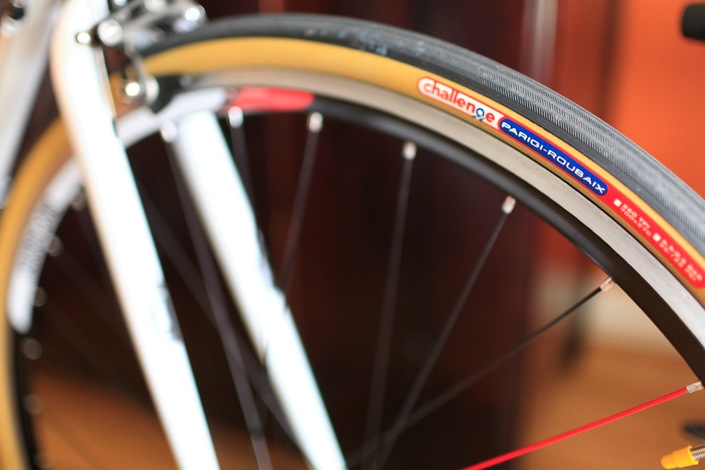
When pumping your bike tires, the results can usually be described as bloated, flat or just right. The way of getting there can be CO2, mini pump or foot pump.
However, the terms mean different things when talking about road bike and mountain bike tires, and they even depend on where you're going to be riding.
BikeRoar guides you through the options and helps you find the answers to questions like: What's best for out on the road/trail?
PUMPING
It begins with pumping, pure and simple, where you have three basic options. Here is a quick run-through of them.
The oldie, but a goodie. A foot pump's sole (sorry for the pun) use is for before or after going for your ride, and there isn't really a better way of pumping your bike just right. Go for one with a pressure gauge that lets you monitor exactly how much pressure you are putting into your tires. Pressure is usually measured in either pounds per square inch (psi), kPa or bar.
A mini pump, or hand pump, is a small manual pump that can easily be taken with you on the ride, making it perfect for fixing punctures and adjusting pressure on the go. The issue with a mini pump is that it takes time and effort - plus, most can only inflate to around 6 bar (87 psi), which can be a problem for 'roadies' who like their tires very pumped.
Some come with a pressure gauge, but that can be overkill. Another way of measuring your tires, if you're riding a road bike, is a thumb nail. When they're properly inflated, you shouldn't be able to put your nail into the tire at all. With mountain bikes you can simply squeeze the tire.

TIP: Thumb nails are a good measure but there is also the flick method. A good finger flick to the sidewall of your tire should produce an almost metallic ring when the tire is at a good pressure.
 There is no way of inflating a bike tire as quickly and effortlessly as a CO2 pump. Plus, it's like inflating with a gun, as the pump uses small, disposable gas canisters, so there's the coolness factor as well. The gas canisters used are small and lightweight, so you can easily bring several along on the ride meaning you don't have to worry about getting more than one flat.
There is no way of inflating a bike tire as quickly and effortlessly as a CO2 pump. Plus, it's like inflating with a gun, as the pump uses small, disposable gas canisters, so there's the coolness factor as well. The gas canisters used are small and lightweight, so you can easily bring several along on the ride meaning you don't have to worry about getting more than one flat.
The CO2 pump can inflate your tires better than a mini pump, but there are a couple of things to watch out for. One is that the metal canisters containing the gas can get extremely cold as they discharge the gas. A CO2 pump with gas canisters is also fairly costly compared to a mini pump.
Some brands such as Lezyne also produce a combined mini/CO2 pump.
PRESSURE
 Tire pressure can be a fine art. For example, one rider will swear by 5.2 bar (75psi) in the front tire and 7.6 (110psi) in the rear, whereas another rider simple cannot ride on anything other than 8.5 bar (123psi). It can be like trying to find the exactly right temperature for a hot shower.
Tire pressure can be a fine art. For example, one rider will swear by 5.2 bar (75psi) in the front tire and 7.6 (110psi) in the rear, whereas another rider simple cannot ride on anything other than 8.5 bar (123psi). It can be like trying to find the exactly right temperature for a hot shower.
There are tables of recommended tire pressure online, but the best advice is to do some trial and error research yourself, as preferred pressure is very much down to the preferred feel of the bike when you ride.
There is also a difference in how much inflation you want in your tires depending on what and where you're riding.
Road bikes
Good quality road race tires can take up to 12-13 bar (approx 170-190psi) of pressure, but this is likely overkill for all but a few riders, and only really useful for race situations. When training, most people go for around 7-9 bar or even lower. If you're into cyclocross you should usually be a bit lower again, and the same goes for commuting bikes. As mentioned before, it really is a question of trial and error.
Mountain bikes
A normal mountain bike tire can be inflated to between 3-5 bar, but you should probably be aiming somewhat lower than that. The surface is king for all bikes and when riding in the forest, you're not on a smooth surface. Here a lower pressure helps your tire grip the surface which will come in handy, especially on the climbs. It's also an advantage on the gravel, where low pressure tires ride along the surface instead of 'cutting' into it.
Some would say that you can go as low as 1.3 or 1.5 bar (18-22psi), while others ride with more pressure, up to 3.5 bar (50psi). Above that is rarely a good idea, and you also should be careful not to go too low. All tires come with a minimum and maximum recommended pressure printed on the side of them and you should never go above or below those levels. This applies to both road bikes and mountain bikes.



